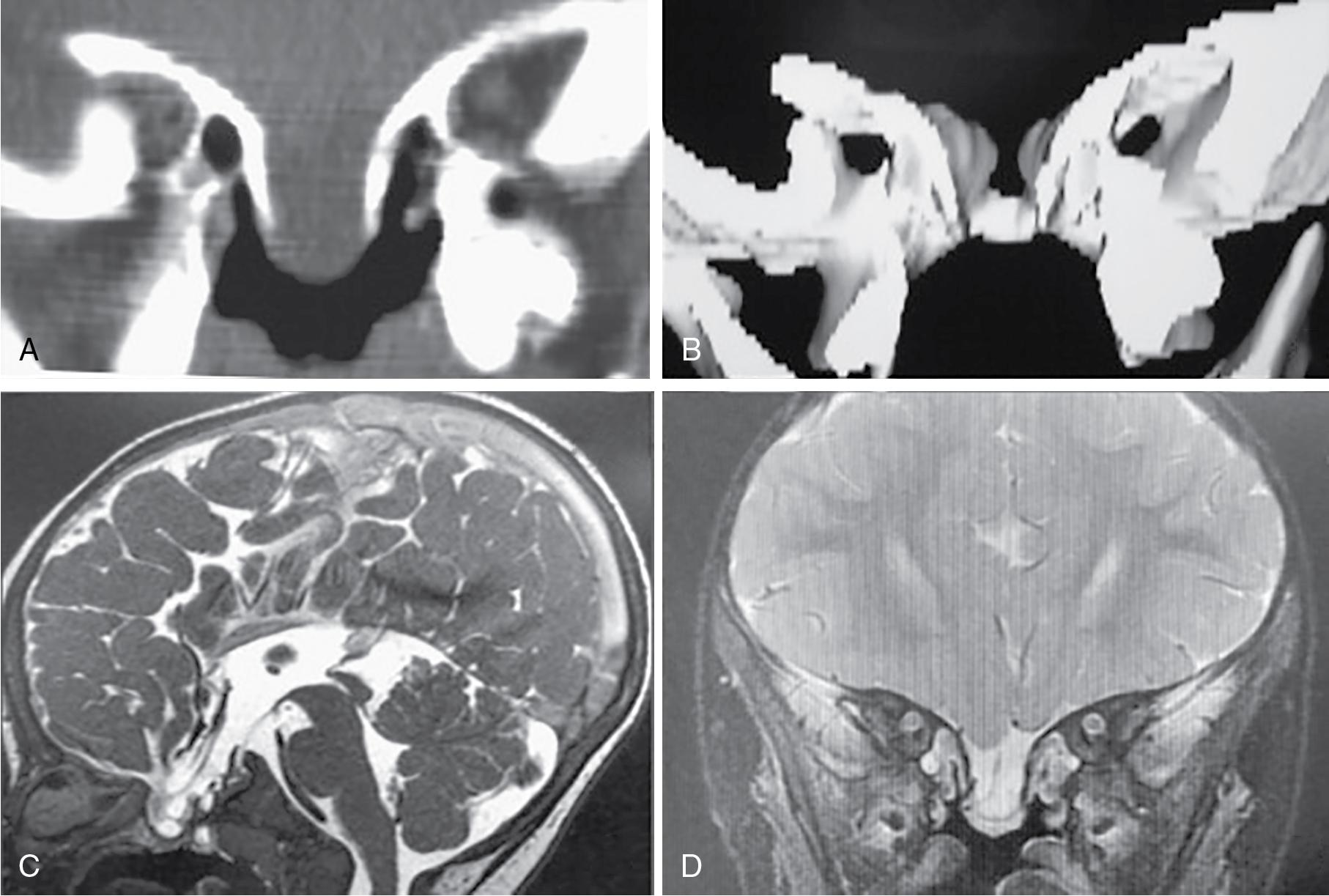Physical Address
304 North Cardinal St.
Dorchester Center, MA 02124
Congenital skull base defects and resultant meningoencephaloceles can occur anywhere along the bony skull base. Defects of the anterior cranial fossa can result in herniation of intracranial contents, with or without a cerebrospinal leak (CSF), into the nasal cavity and paranasal sinuses. Such herniation pockets can be classified as meningoceles, including meninges only; encephaloceles, including meninges and brain tissue; or encephalocystoceles, which involve meninges and brain tissue in addition to a cystic portion of the ventricular system. Anterior congenital skull base defects and their resultant encephaloceles are classified anatomically into two primary subtypes: sincipital encephaloceles are defects anterior to the cribriform plate resulting from a defect in the foramen cecum, and basal encephaloceles are defects posterior to the foramen cecum, through the cribriform plate or planum sphenoidale. ,
The incidence of various types of encephaloceles varies considerably by region. Although anterior encephaloceles are found in 1 in 3500 to 1:6,000 live births in southeast Asia and parts of Russia and central Africa, they are far less common in North America, occurring in only 1 in 35,000 live births. The age at diagnosis ranges from 0 to 40 years. Conversely, although occipital encephaloceles appear to be less common where anterior encephaloceles are prominent, in North America, they make up 85% of all skull base encephaloceles. Among anterior encephaloceles, sincipital defects are far more common than basal defects, which make up only 2% to 10% of all reported cases of anterior skull base defects.
Congenital anterior skull base defects and encephaloceles do not have a clear unifying cause. However, several mechanisms have been proposed. These include weakness in the ossifying bone during development, as well as a defect or delay in neural tube closure. Their mechanism is thought by some investigators to differ from posterior neural tube defects because anterior encephaloceles are far less likely than occipital defects to contain functional neurologic tissue.
The location of defective closure and ossification determines the location of the resultant encephalocele. Sincipital encephaloceles, for instance, can be classified as nasofrontal, nasoethmoidal, or nasoorbital. Nasofrontal encephaloceles can result from defects between the developing nasal and frontal bones. As the bones meet during development, they close a space known as the fonticulus frontalis. Failure of this closure may result in a nasofrontal encephalocele, which protrudes between the inferior border of frontal bone and the superior border of the nasal bone. This can result in a mass at the nasion. Nasoethmoidal encephaloceles protrude through the foramen cecum, a passageway between the converging ethmoid and frontal bones that closes during normal development. The foramen cecum leads from the intracranial space to the prenasal space, which lies between the developing nasal bones and the deeper nasal cartilage. During development, a stalk of dura extends from the intracranial cavity to the prenasal space, extending beyond the nasal bones and lying in close proximity to the skin. Normal regression of this tissue through the foramen cecum may be perturbed and result in encephaloceles passing through the foramen cecum, called nasoethmoidal encephaloceles. Nasoorbital encephaloceles, which are less common, protrude posteriorly to the nasal bone into the bony orbit.
Basal encephaloceles have been classified as sphenoethmoidal, transethmoidal, intrasphenoidal, transsphenoidal, and sphenoorbital, depending on their location. , Although intrasphenoidal encephaloceles protrude through the roof of the sinus and are contained by the floor, transsphenoidal encephaloceles protrude through defects in the roof and floor. Fig. 20.1 shows a meningocystocele protruding from a large basal defect.

Although most congenital skull base defects occur in an isolated manner, some have been found to be associated with congenital syndromes, including Arnold Chiari I syndrome, de Morsier syndrome, DiGeorge syndrome, moyamoya disease, morning glory syndrome, bilateral optic nerve coloboma, oral-facial-digital syndrome, and median cleft face syndrome. , Multiple risk factors are believed to contribute to their etiology, including environmental, nutritional, and genetic, as well as maternal factors. One study found a higher proportion of encephaloceles in children in a rural population in Kosovo, suggesting that vitamin deficiency may play a role. Although some studies have found a greater proportion of encephaloceles in female patients, neither recurrence within families nor association with maternal age has been demonstrated. ,
Become a Clinical Tree membership for Full access and enjoy Unlimited articles
If you are a member. Log in here